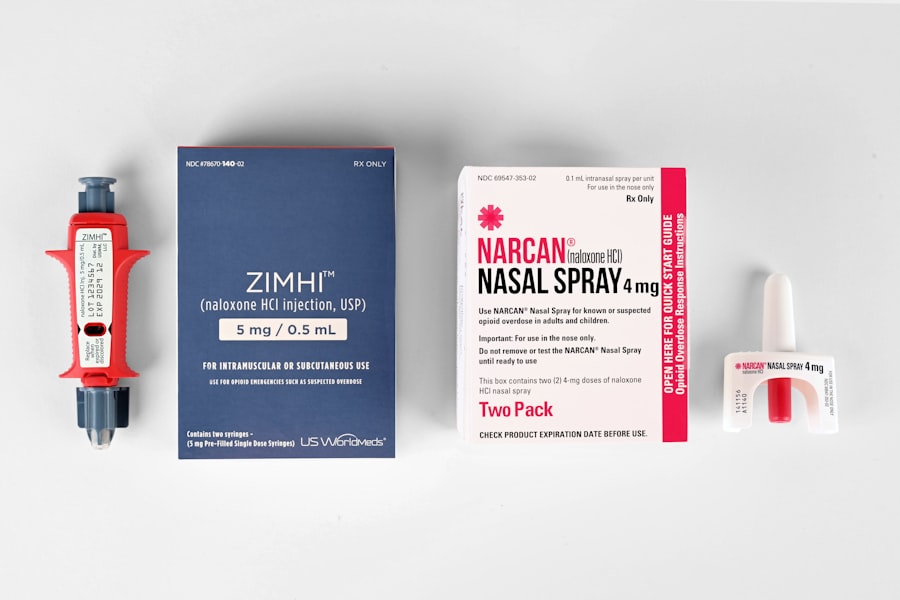Branding in the medical field is not merely a marketing strategy; it is a vital component that shapes the perception of healthcare providers and institutions. In an industry where trust and reliability are paramount, effective branding can significantly influence patient choices and loyalty. A strong brand can differentiate a healthcare provider from its competitors, establishing a unique identity that resonates with patients.
This differentiation is crucial in a crowded marketplace where numerous options exist for patients seeking medical care. A well-defined brand communicates the values, mission, and quality of care that a medical practice or institution offers, fostering a sense of familiarity and comfort among potential patients. Moreover, branding in healthcare extends beyond just logos and slogans; it encompasses the entire patient experience.
From the first point of contact—whether through a website, social media, or a physical location—to the quality of care received, every interaction contributes to the overall brand perception. For instance, a hospital that emphasizes compassionate care and patient-centered services in its branding will likely attract patients who prioritize these values. In contrast, a practice that focuses solely on advanced technology may appeal to a different demographic.
Thus, understanding the nuances of branding in the medical field is essential for healthcare providers aiming to build lasting relationships with their patients.
Key Takeaways
- Branding is crucial for establishing recognition and trust in the medical field.
- Knowing the target audience helps tailor branding efforts effectively.
- A unique and memorable logo enhances brand identity and recall.
- Consistency across all branding elements strengthens professional image.
- Leveraging social media and patient testimonials builds credibility and engagement.
Understanding the Target Audience
To create an effective branding strategy in the medical field, it is imperative to have a deep understanding of the target audience. This involves not only demographic factors such as age, gender, and socioeconomic status but also psychographic elements like values, beliefs, and lifestyle choices. For example, a pediatric clinic may focus on branding that appeals to parents, emphasizing safety, warmth, and child-friendly environments.
In contrast, a geriatric care facility might highlight expertise in managing chronic conditions and providing compassionate end-of-life care. By tailoring branding efforts to meet the specific needs and preferences of different patient segments, healthcare providers can enhance their appeal and foster stronger connections. Additionally, understanding the target audience involves recognizing their pain points and motivations when seeking medical care.
Patients often look for providers who not only offer high-quality services but also understand their unique challenges. For instance, individuals with chronic illnesses may prioritize accessibility and continuity of care in their choice of healthcare providers. By conducting market research, surveys, and focus groups, medical practices can gather valuable insights into what their patients value most.
This information can then be leveraged to inform branding strategies that resonate with the audience on a deeper level.
Creating a Unique and Memorable Logo

A logo serves as the visual cornerstone of a brand’s identity, making it essential for healthcare providers to invest time and resources into creating a unique and memorable logo. An effective logo should encapsulate the essence of the brand while being easily recognizable and versatile across various platforms. For instance, the iconic red cross symbolizes emergency medical services worldwide, instantly conveying trust and urgency.
Similarly, a well-designed logo for a medical practice should reflect its core values—whether that be compassion, innovation, or expertise—while remaining simple enough to be easily remembered. When designing a logo for a medical brand, color psychology plays a significant role. Colors evoke emotions and can influence perceptions; for example, blue is often associated with trust and professionalism, making it a popular choice in healthcare branding.
Green conveys health and wellness, while warm colors like orange can evoke feelings of comfort and friendliness. A thoughtful combination of colors, typography, and imagery can create a logo that not only stands out but also communicates the brand’s message effectively. Furthermore, it is crucial to ensure that the logo is adaptable for various uses—from business cards to digital platforms—maintaining its integrity across different mediums.
Establishing a Consistent Brand Identity
| Metric | Description | Measurement Method | Target Value | Frequency |
|---|---|---|---|---|
| Brand Recognition | Percentage of target audience that recognizes the brand | Surveys and brand recall tests | 75%+ | Quarterly |
| Logo Consistency | Percentage of marketing materials using the approved logo | Audit of marketing collateral | 100% | Monthly |
| Brand Voice Consistency | Alignment of messaging tone across channels | Content audits and sentiment analysis | 90%+ | Monthly |
| Color Palette Usage | Percentage of materials using approved brand colors | Visual audits of digital and print assets | 100% | Monthly |
| Customer Brand Perception | Positive sentiment percentage in customer feedback | Social listening and surveys | 80%+ | Quarterly |
| Brand Guidelines Compliance | Percentage of teams adhering to brand guidelines | Internal audits and training assessments | 95%+ | Bi-annual |
Consistency in brand identity is critical for building recognition and trust in the medical field. A cohesive brand identity encompasses not only visual elements like logos and color schemes but also tone of voice, messaging, and overall patient experience. Every touchpoint—whether it’s a website, social media post, or patient brochure—should reflect the same values and aesthetics to reinforce the brand’s message.
For example, if a healthcare provider positions itself as an innovative leader in technology-driven care, all communications should reflect this ethos through modern design elements and forward-thinking language. Establishing consistency also involves training staff to embody the brand’s values in their interactions with patients. Frontline employees are often the face of the brand; their behavior and communication style can significantly impact patient perceptions.
A practice that emphasizes empathy and personalized care should ensure that all staff members are trained to engage with patients in a manner that reflects these principles. This alignment between branding and employee behavior fosters an authentic experience for patients, reinforcing their connection to the brand.
Utilizing Social Media and Digital Marketing
In today’s digital age, social media and digital marketing are indispensable tools for healthcare branding. These platforms provide an opportunity for medical providers to engage with their audience directly, share valuable content, and build community relationships. For instance, a hospital might use social media to promote health awareness campaigns or share success stories from patients who have undergone treatment.
By providing informative content that addresses common health concerns or highlights advancements in medical technology, healthcare providers can position themselves as trusted sources of information. Moreover, digital marketing strategies such as search engine optimization (SEO) can enhance visibility online. By optimizing their websites for relevant keywords related to their services, healthcare providers can attract more traffic from potential patients searching for specific medical information or services.
Additionally, targeted online advertising can help reach specific demographics based on location or interests, ensuring that branding efforts are directed toward those most likely to engage with the services offered. The integration of social media analytics allows providers to track engagement metrics and adjust their strategies accordingly to maximize impact.
Building Trust and Credibility

Trust is an essential currency in the medical field; patients must feel confident in their healthcare providers’ abilities to deliver quality care. Building trust begins with transparency in communication—healthcare providers should be open about their qualifications, treatment options, and potential risks associated with procedures. This transparency can be communicated through various channels such as websites, brochures, or during patient consultations.
For example, a practice might include detailed bios of its physicians on its website, highlighting their education, experience, and areas of expertise to instill confidence in prospective patients. Additionally, maintaining high standards of care is fundamental to establishing credibility within the community. Consistently positive patient outcomes contribute significantly to a provider’s reputation; therefore, healthcare organizations must prioritize quality assurance measures and continuous improvement initiatives.
Engaging with professional organizations or obtaining relevant certifications can further enhance credibility by demonstrating commitment to best practices within the industry. When patients perceive that their healthcare provider is dedicated to excellence and ethical standards, they are more likely to trust them with their health.
Incorporating Patient Testimonials and Success Stories
Patient testimonials and success stories serve as powerful tools for enhancing a medical brand’s credibility and appeal. These narratives provide real-life evidence of the quality of care provided by healthcare professionals and can significantly influence potential patients’ decisions. For instance, sharing stories of patients who have successfully navigated complex treatments or achieved significant health improvements can resonate deeply with others facing similar challenges.
Such testimonials humanize the brand and create emotional connections that statistics alone cannot achieve. Incorporating these stories into marketing materials—whether on websites, social media platforms, or printed brochures—can amplify their impact. Video testimonials can be particularly effective; seeing and hearing from real patients adds authenticity to their experiences.
Additionally, featuring diverse patient stories can help prospective patients identify with those who have similar backgrounds or health concerns. By showcasing genuine experiences of care received at a facility or practice, healthcare providers can foster trust while simultaneously promoting their services.
Evaluating and Adapting Branding Strategies for Long-Term Success
The landscape of healthcare is constantly evolving due to advancements in technology, changes in patient expectations, and shifts in regulatory environments. Therefore, it is crucial for healthcare providers to regularly evaluate their branding strategies to ensure they remain relevant and effective over time. This evaluation process may involve gathering feedback from patients through surveys or focus groups to assess perceptions of the brand and identify areas for improvement.
Adapting branding strategies based on this feedback allows healthcare organizations to stay aligned with patient needs while also responding to emerging trends within the industry. For example, if data indicates that patients increasingly value telehealth services post-pandemic, a practice may choose to emphasize its telehealth offerings in its branding efforts. Continuous monitoring of competitors’ branding strategies can also provide insights into market shifts that may necessitate adjustments in approach.
By remaining agile and responsive to changes within the healthcare landscape, providers can ensure their branding efforts contribute to long-term success while fostering enduring relationships with their patients.



